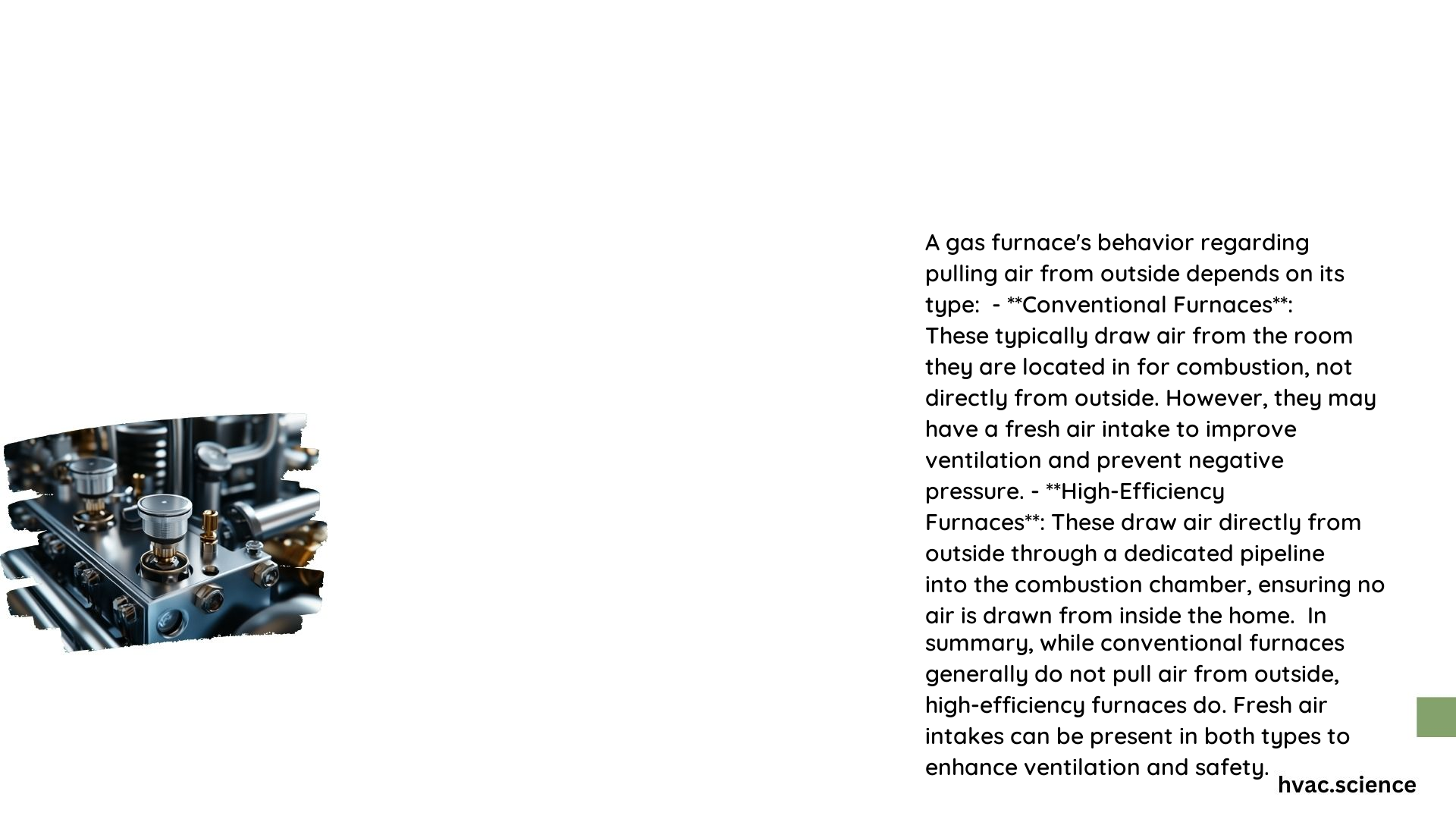Gas furnaces require a sufficient supply of air for combustion to operate efficiently and safely. The method by which a gas furnace obtains this air can vary depending on the type of furnace and its installation.
What Types of Gas Furnaces Are There and How Do They Intake Air?
1. Conventional Furnaces
- Standard/Conventional Furnaces: These furnaces, often referred to as “80 percent furnaces,” draw air from the surrounding space where they are installed. This air can come from inside the house, which may include unconditioned spaces like attics, crawl spaces, or other areas that could contain contaminants.
- Implications: Without a fresh air intake, conventional furnaces can suffer from reduced efficiency and increased wear on components due to corrosive contaminants. Additionally, there is a risk of back-drafting toxic fumes and carbon monoxide into the living space if the air intake is blocked or inadequate.
2. High-Efficiency Furnaces
- High-Efficiency Furnaces: These furnaces, known as “90 percent furnaces,” have a dedicated pipeline that runs directly from an outside vent into the sealed combustion chamber of the furnace. This design ensures that the furnace draws air directly from outside, eliminating the need to draw air from inside the house.
- Implications: High-efficiency furnaces do not require a fresh air intake for the furnace itself, but it is still important to ensure that the home has adequate ventilation to prevent moisture buildup and maintain overall indoor air quality. If the fresh air intake is blocked or removed, it can lead to excess moisture issues, such as mildew on windows.
Why Is a Fresh Air Intake Necessary?

- Importance: A fresh air intake is crucial for maintaining indoor air quality and ensuring the safe and efficient operation of the furnace. It prevents the furnace from drawing air from unconditioned spaces, which can contain contaminants and reduce the furnace’s lifespan.
- Specifications and Calculations: The volume of air required for combustion is determined by the furnace’s make, size, and fuel type. For example, a furnace firing at 120,000 BTUs per hour would require about 60 cubic feet of air per minute (30 cubic feet of combustion air and 30 cubic feet of dilution air per cubic foot of gas burned).
How Can Inadequate Air Intake Impact Efficiency and Safety?
- Efficiency: Inadequate combustion air can lead to reduced heating efficiency, increased energy bills, and faster wear on the furnace’s components. This is because the furnace must work harder to achieve the desired heating output, leading to increased energy consumption and potential breakdowns.
- Safety: Incomplete combustion due to inadequate air intake can result in the production of carbon monoxide, a poisonous gas that can circulate in the home and pose serious health risks. Additionally, back-drafting can occur if the air intake is blocked, causing toxic fumes to enter the living space.
What HVAC Codes and Standards Relate to Gas Furnace Air Intake?
- Codes and Standards: Fresh air intakes are often mandated by local health standards to ensure safe operation of gas furnaces. For instance, in some jurisdictions, it is legally required to have a fresh air intake system to prevent carbon monoxide formation.
- Air Volume Requirements: The specific air volume requirements are calculated based on the furnace’s BTU rating and the type of fuel used. For example, one square inch of opening is required for every 4,000 BTUs to ensure adequate combustion and dilution air.
In conclusion, the answer to the question “Does a Gas Furnace Pull Air From Outside?” depends on the type of gas furnace. Conventional furnaces draw air from the surrounding indoor space, while high-efficiency furnaces have a dedicated fresh air intake from the outside. Ensuring adequate combustion air is crucial for both types of furnaces to maintain efficiency, safety, and indoor air quality.
Reference:
1. Furnace Fresh Air Intake 101 – Weather Tech Heating and Cooling
2. Causes and Dangers of Inadequate Combustion Air for Furnaces – Any Season Heating & Air Conditioning
3. Furnace Fresh Air Intake: What You Should Know – Always Plumbing
